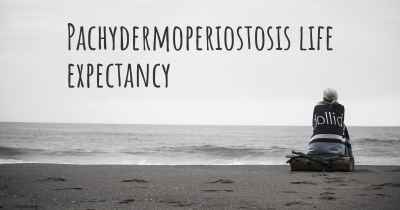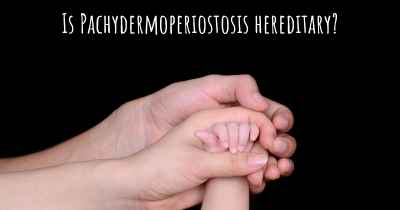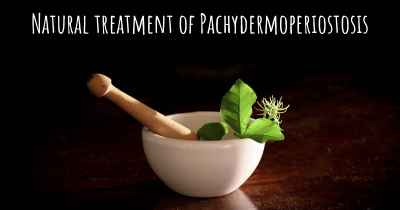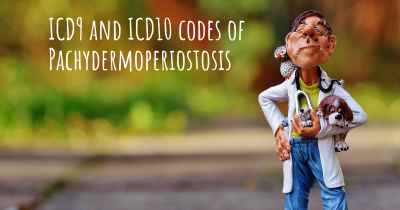Living with Pachydermoperiostosis. How to live with Pachydermoperiostosis?
Can you be happy living with Pachydermoperiostosis? What do you have to do to be happy with Pachydermoperiostosis? Living with Pachydermoperiostosis can be difficult, but you have to fight to try to be happy. Have a look at things that other people have done to be happy with Pachydermoperiostosis
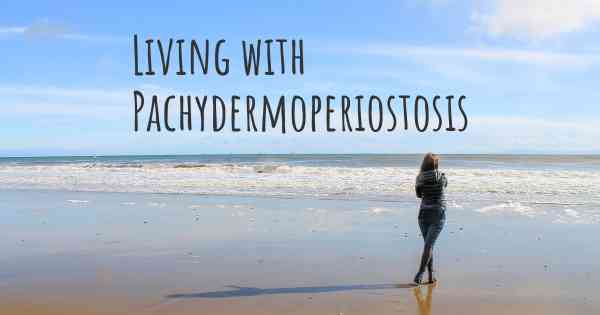
Living with Pachydermoperiostosis
Pachydermoperiostosis is a rare genetic disorder that affects the skin and bones, leading to various physical and functional challenges. While living with this condition can be challenging, there are ways to manage its symptoms and improve your quality of life.
Medical Management
It is crucial to work closely with a medical professional experienced in treating Pachydermoperiostosis. They can help develop a personalized treatment plan based on your specific needs. This may include:
- Nonsteroidal anti-inflammatory drugs (NSAIDs): These medications can help reduce pain and inflammation associated with the condition.
- Physical therapy: Engaging in regular physical therapy sessions can help improve joint mobility, muscle strength, and overall function.
- Orthopedic interventions: In severe cases, surgical interventions may be necessary to correct bone deformities or relieve joint restrictions.
- Management of associated conditions: Pachydermoperiostosis is often associated with other health issues such as acne, hyperhidrosis, and arthritis. Treating these conditions can help alleviate their impact on your daily life.
Self-Care and Lifestyle Modifications
While medical management is essential, there are several self-care strategies and lifestyle modifications that can complement your treatment plan:
- Protect your skin: Due to the thickened skin associated with Pachydermoperiostosis, it is important to protect it from excessive sun exposure and trauma. Use sunscreen, wear protective clothing, and avoid activities that may cause skin damage.
- Exercise regularly: Engaging in low-impact exercises, such as swimming or cycling, can help maintain joint flexibility, strengthen muscles, and improve overall well-being.
- Manage pain: Explore pain management techniques such as heat or cold therapy, relaxation exercises, and mindfulness techniques to help cope with discomfort.
- Seek emotional support: Living with a rare condition can be emotionally challenging. Reach out to support groups, counseling services, or online communities to connect with others who understand your experiences.
- Adopt a healthy lifestyle: Eating a balanced diet, getting enough sleep, and avoiding smoking or excessive alcohol consumption can contribute to your overall health and well-being.
Assistive Devices and Adaptations
Depending on the severity of your symptoms, you may benefit from using assistive devices or making adaptations to your environment:
- Mobility aids: Canes, walkers, or wheelchairs may assist with mobility if joint pain or deformities make it difficult to walk.
- Home modifications: Adapting your home with handrails, ramps, or bathroom modifications can enhance accessibility and safety.
- Assistive tools: Utilize tools with ergonomic designs or modifications to make daily tasks easier, such as jar openers, reachers, or adaptive utensils.
Regular Follow-ups and Monitoring
Regular follow-up appointments with your healthcare provider are crucial to monitor the progression of Pachydermoperiostosis and adjust your treatment plan accordingly. They can assess the effectiveness of interventions, manage associated conditions, and provide ongoing support.
Education and Advocacy
Empower yourself by learning more about Pachydermoperiostosis and becoming an advocate for your own health. Stay informed about the latest research, treatment options, and support resources. By educating others about your condition, you can raise awareness and promote understanding.
Living with Pachydermoperiostosis can be challenging, but with proper medical management, self-care strategies, and support, it is possible to lead a fulfilling life. Remember to consult with healthcare professionals for personalized advice and guidance.
